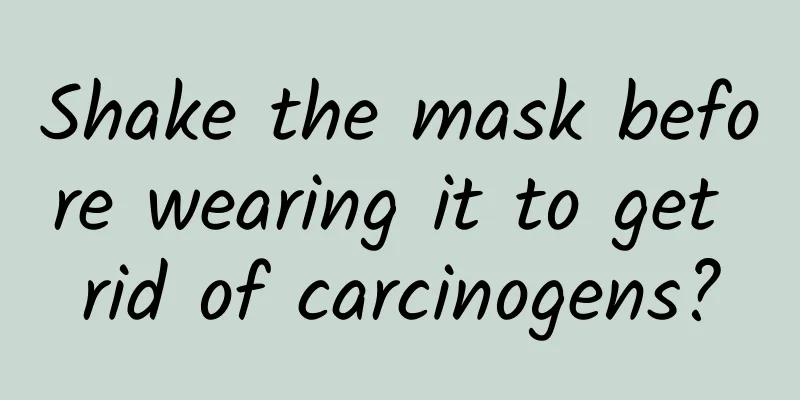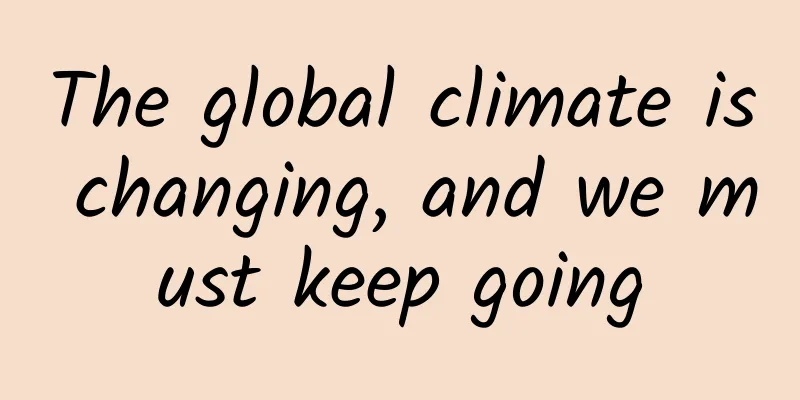Shake the mask before wearing it to get rid of carcinogens?

|
In the past two days, a video stating that "the residue left after mask disinfection is a type of carcinogen, so you need to shake the mask before using it" has been widely circulated in WeChat groups. In the video, a staff member in a white coat gave everyone a scientific explanation of the "ethylene oxide" residue in the masks, and said that "ethylene oxide is a first-class carcinogen." Testing showed that all five masks had ethylene oxide residues. Although they met national standards, it is best to shake the masks in the air after opening the package to significantly reduce the ethylene oxide value. So does this process really lead to ethylene oxide residues and affect health? On this issue, the reporter contacted relevant experts today. Ordinary citizens don't need to worry or panic. Ethylene oxide is an organic compound with the chemical formula C2H4O. Its English name is Ethylene Oxide, or EO for short. It is indeed a toxic carcinogen that can be used to make disinfectants and is widely used in the washing, pharmaceutical, printing and dyeing industries. The masks we usually use are generally sterilized with ethylene oxide. Regarding issues that may affect health, Zhu Liping, deputy general manager of Zhejiang Jiande Chaomei Daily Chemical Co., Ltd., believes that there is no need to worry or panic. The first and most important point is the process flow. Zhu Liping said that, unlike what most people understand, the "ethylene oxide sterilization" of masks is not sterilization before packaging, but "sterilization after the initial packaging is fully formed, at least when the inner packaging is well packed. The characteristic of ethylene oxide gas is that it has a strong penetrating ability." In other words, after the packaged masks are sterilized, ethylene oxide can still evaporate. After the masks are sterilized with ethylene oxide, the manufacturer will also have a verified analysis time, "which must be checked by the competent authorities." After that, when the masks leave the factory, they will also be tested for ethylene oxide, which must meet national standards, that is, less than 10μg/g. The so-called first-class carcinogen sounds scary, but in fact, "ethylene oxide is similar to formaldehyde in our daily life". It does not poison people when it exists, but it is harmful only when it reaches a certain amount. Zhu Liping calculated for us that a mask takes at least one month from packaging to ethylene oxide sterilization, then analysis time in the factory, and then leaving the factory, storage, transportation, sales, and finally reaching the hands of consumers. Ethylene oxide itself is volatile and meets national standards when it leaves the factory. In addition, after such a long period of evaporation, the possibility of residual and health hazards is really "minimal". Online videos can easily mislead ordinary consumers, please treat them rationally In addition, Zhu Liping believes that in the video circulating online, the staff wore white coats and behaved very professionally. Such behavior is questionable, "it is easy to mislead ordinary consumers and cause panic." "We have a very scientific and globally applicable method to measure EO (ethylene oxide) residues. You can use gas chromatography to identify how much EO residue is in my product. There is no need to mislead consumers like this." Ding Xiang Yuan, a well-known medical science account, also published a message expressing the hope that such videos would not cause people's hard-earned habit of wearing masks to be shaken: "Talking about toxicity without considering the dosage is just hooliganism." Beijing Daily also interviewed Zhu Lin, deputy chief physician of the Disinfection Department of Chaoyang District Center for Disease Control and Prevention, about this matter today. She said that the medical surgical masks we wear daily do not pose a threat of carcinogenicity from ethylene oxide residues, and that masks produced by regular companies can be used with confidence. 1. How are the masks purchased on the market disinfected and sterilized? Zhu Lin: Most of the medical surgical masks and N95 masks available on the market are sterilized by ethylene oxide steam fumigation. But not all masks are sterilized in this way. Some masks are made in sterile workshops. When the national epidemic situation was the most severe last year, a large number of masks were sterilized by radiation. 2. Will masks sterilized with ethylene oxide contain carcinogenic residues that may harm the wearer's health? Zhu Lin: Mask manufacturers will package masks after disinfection and after the ethylene oxide has evaporated. The packaging of masks is not completely airtight, and ethylene oxide is a volatile substance. When the masks go through multiple processes and reach consumers, there is basically no residual substance that can cause problems. The ethylene oxide residues of the mask samples tested in the video are all lower than the national standard, which will not pose a threat to the health of the wearer. 3. Before wearing a mask, is it necessary to "shake the mask" to reduce the impact of ethylene oxide residues? Zhu Lin: Actually, it’s not necessary. In the hospital, we medical staff will not do this. The mask is in a sterile state when it is taken out of the package, and we will not deliberately expose it to the air. For ordinary citizens, if shaking or airing the mask can make you feel more at ease, then generally doing so will not affect the protective effect of the mask. 4. Is there a situation where the ethylene oxide residue in “small workshop products” exceeds the standard? Zhu Lin: The cost of ethylene oxide disinfection equipment is relatively high, so generally there is no hidden danger in this regard. For inferior masks, we are more worried about the poor hygiene of the masks, which may cause health problems. When buying masks, you should choose products produced by regular companies. Products from small workshops may have defects in raw materials and production processes, resulting in substandard products or excessive bacteria. Consumers can use masks produced by regular companies with confidence. 5. How to wear a mask scientifically? What advice do you have for the public? Zhu Lin: Unless you are in a high-risk environment such as direct contact with patients with respiratory diseases, it is not recommended that you wear medical N95 masks. In places where the virus may "appear", such as hospitals, enclosed indoor spaces, and medium-risk areas, wearing a medical surgical mask is sufficient. Regarding the frequency of changing masks, it is recommended to change one a day. If you need to take it off in the middle, you can find a clean tissue to wrap it up or hang it up. Finally, for the prevention of respiratory and digestive tract diseases, wearing a mask alone is not enough, and you must pay attention to hand hygiene. Masks are not omnipotent, and frequent hand washing is also an important line of defense. As of press time, the video originally released by the unit has been taken down, but there are still a large number of forwarded videos circulating online. We hope that everyone will not worry about this and continue to maintain the good habit of wearing masks. Source: Chengshi Interactive·Metropolitan Express, Sina Weibo, Beijing Daily Client Editor: Wang Yu Review: Yue Liang Final review: Liu Haiying |
<<: Technology News | Self-reproducing living robot is launched
>>: The virus mutates again! What happened to Omicron?
Recommend
Bai Tan "Mang (Tik Tok Girl Version)" lyrics mp3 network disk Baidu cloud download
Bai Tan "Mang (Tik Tok Girl Version)" l...
Dual-system Blue Magic i10 Pro review experience
As a dual-system tablet product of the new era, th...
Is Tik Tok restricting influencers from promoting products?
In the past few months, Douyin has been imposing ...
Don't buy it anymore! The flower you bought may be a national second-level protected plant! Be careful of breaking the law
Expert of this article: Rong Hai, plant science w...
Xiaohongshu Promotion丨How to quickly create popular notes!
I have a strong interest in customer acquisition,...
Is the perfect world of IoT secure enough?
Introduction: Security challenges are increasing ...
A case study on efficient advertising and customer acquisition optimization in the beauty industry!
With the development of society, the growth momen...
How do brands use Kuaishou marketing?
For many brands, the first time they experience t...
Summary of the channel characteristics of advertising on Momo, iQiyi, Kuaishou, etc.!
What are the characteristics of information flow ...
[PP Assistant Special Self-Recommendation Issue 1] Don’t miss the opportunity to bring volume to Android for free!
PP Assistant seeks comprehensive benefits for dev...
Will the slow-moving smartwatch become a thing of the past?
At the end of 2016, Motorola announced that it wo...
Optimization techniques and advantages of splash screen ads!
Whether it is a general giant APP or a specific v...
3 common sales techniques, take them without thanks!
Most people don’t like sales pitches. The first r...
After spending money, how can we judge the effectiveness of promotion?
You know that half of your advertising budget is ...
Mini Program Development Page Sample Code
Page(Object object) Dongguan mini program develop...









